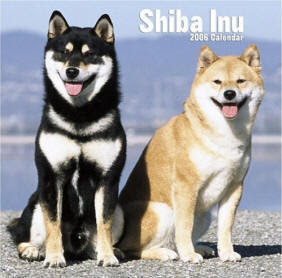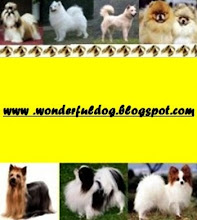Working Group
General Appearance
 in the 1940's, the Neapolitan Mastiff is a heavy-boned, massive, awe inspiring dog bred for use as a guard and defender of owner and property. He is characterized by loose skin, over his entire body, abundant, hanging wrinkles and folds on the head and a voluminous dewlap. The essence of the Neapolitan is his bestial appearance, astounding head and imposing size and attitude. Due to his massive structure, his characteristic movement is rolling and lumbering, not elegant or showy.
in the 1940's, the Neapolitan Mastiff is a heavy-boned, massive, awe inspiring dog bred for use as a guard and defender of owner and property. He is characterized by loose skin, over his entire body, abundant, hanging wrinkles and folds on the head and a voluminous dewlap. The essence of the Neapolitan is his bestial appearance, astounding head and imposing size and attitude. Due to his massive structure, his characteristic movement is rolling and lumbering, not elegant or showy.Size, Proportion, Substance
A stocky, heavy boned dog, massive in substance, rectangular in proportion. Length of body is 10% - 15% greater than height. Height: Dogs: 26 to 31 inches, Bitches: 24 to 29 inches. Average weight of mature Dogs: 150 pounds; Bitches: 110 pounds; but greater weight is usual and preferable as long as correct proportion and function are maintained.
The absence of massiveness is to be so severely penalized as to eliminate from competition
Head
 rs of the muzzle, and the lowest part of these borders is made by the corners of the lips. The corners turn outward to reveal the flews, and are in line with the outside corners of the eyes. Bite: Scissors bite or pincer bite is standard; slight undershot is allowed. Dentition is complete. Faults: More than 1 missing premolar. Severe faults: Overshot jaw: pronounced undershot jaw which disrupts the outline of the front plane of the muzzle; more than 2 missing teeth.
rs of the muzzle, and the lowest part of these borders is made by the corners of the lips. The corners turn outward to reveal the flews, and are in line with the outside corners of the eyes. Bite: Scissors bite or pincer bite is standard; slight undershot is allowed. Dentition is complete. Faults: More than 1 missing premolar. Severe faults: Overshot jaw: pronounced undershot jaw which disrupts the outline of the front plane of the muzzle; more than 2 missing teeth.Neck, Topline, And Body
Neck: Slightly arched, rather short, stocky and well-muscled. The voluminous and well-divided dewlap extends from the lower jaw to the lower neck. Disqualification: Absence of dewlap. Body: The length of the dog, measured from the point of the shoulder to the point of buttock is 10 - 15 percent greater than the height of the dog measured from the highest point of the shoulder to the ground. Depth of the ribcage is equal to half the total height of the dog. Ribs are long and well sprung. Chest: Broad and deep, well muscled. Underline and tuckup: The underline of the abdomen is practically horizontal. There is little or no tuckup. Back: Wide and strong. Highest part of shoulder blade barely rising above the strong, level topline of the back. Loin: well-muscled, and harmoniously joined to the back. Croup: Wide, strong, muscular and slightly sloped. The top of the croup rises slightly and is level with the highest point of the shoulder. Tail: Set on slightly lower than the topline, wide and thick at the root, tapering gradually toward the tip. It is docked by 1/3. At rest, the tail hangs straight or in slight "S" shape. When in action, it is raised to the horizontal or a little higher than the back. Severe Fault: Tail carried straight up or curved over the back. Kinked tail. Disqualification: Lack of tail or short tail, which is less than 1/3 the length from point of insertion of the tail to the hock - joint.
Forequarters
Heavily built, muscular, and in balance with the hindquarters. Shoulders: Long, well-muscled, sloping and powerful. Upper arms: Strongly muscled, powerful. In length, almost 1/3 the height of the dog. Elbows: Covered with abundant and loose skin; held parallel to the ribcage, neither tied in nor loose. Forelegs: Thick, straight, heavy bone, well muscled, exemplifying strength. About the same length as the upper arms. Set well apart. Pasterns: Thick and flattened from front to back, moderately sloping forward from the leg. Dewclaws: Front dewclaws are not removed. Feet: Round and noticeably large with arched, strong toes. Nails strong, curved and preferably dark-colored. Slight turn out of the front feet is characteristic.
Hindquarters
As a whole, they must be powerful and strong, in harmony with the forequarters. Thighs: About the same length as the forearms, broad, muscular. Stifles: Moderate angle, strong. Legs: Heavy and thick boned, well-muscled. Slightly shorter than thigh bones. Hocks: Powerful and long. Rear pasterns: (metatarsus) Heavy thick bones. Viewed from the side, they are perpendicular to the ground. Viewed from, the rear, parallel to each other. Rear dewclaws: Any dewclaws must be removed. Hind feet: Same as the front feet but slightly smaller.
Coat
The coat is short, dense and of uniform length and smoothness all over the body. The hairs are straight and not longer than 1 inch. No fringe anywhere.
Color
Solid coats of gray (blue), black, mahogany and tawny, and the lighter and darker shades of these colors. Some brindling allowable in all colors. When present, brindling must be tan (reverse brindle). There may be solid white markings on the chest, throat area from chin to chest, underside of the body, penis sheath, backs of the pasterns, and on the toes. There may be white hairs at the back of the wrists. Disqualifications: White markings on any part of the body not mentioned as allowed.
Gait
The Neapolitan Mastiff's movement is not flashy, but rather slow and lumbering. Normal gaits are the walk, trot, gallop, and pace. The strides are long and elastic, at the same time, powerful, characterized by a long push from the hindquarters and extension of the forelegs. Rolling motion and swaying of the body at all gaits is characteristic. Pacing in the show ring is not to be penalized. Slight paddling movement of the front feet is normal. The head is carried level with or slightly above the back.
Temperament
The Neapolitan Mastiff is steady and loyal to his owner, not aggressive or apt to bite without reason. As a protector of his property and owners, he is always watchful and does not relish intrusion by strangers into his personal space. His attitude is calm yet wary. In the show ring he is majestic and powerful, but not showy.
Faults
The foregoing description is that of the ideal Neapolitan Mastiff. Any deviation from the above described dog must be penalized to the extent of the deviation.
Disqualifications
Absence of wrinkles and folds
Absence of dewlap
Lack of tail or short tail, which is less than 1/3 the length from point of insertion of the tail to the hock.
White markings on any part of the body not mentioned.









